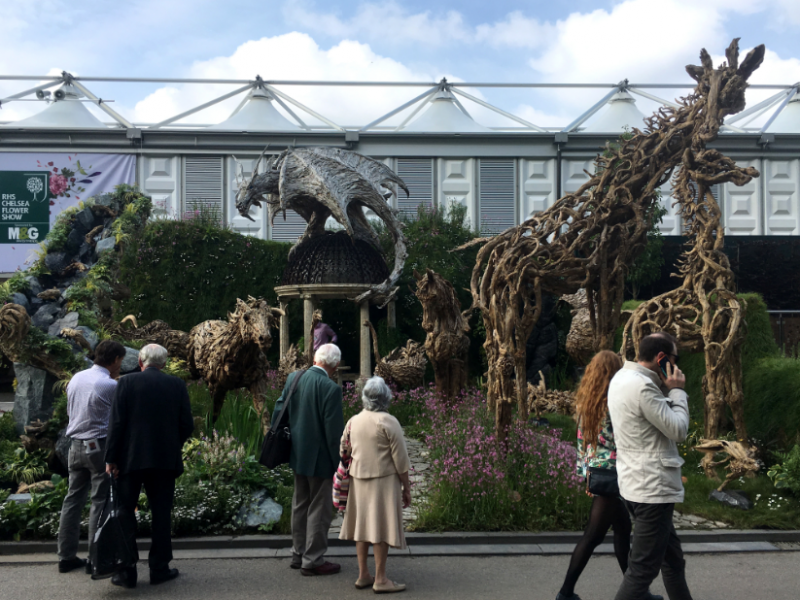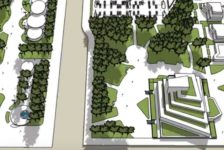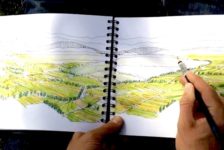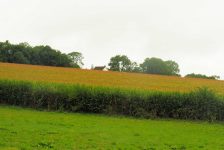You’ve probably seen photos from Chelsea Flower Show. For a week in late May each year, the grounds of the Royal Hospital Chelsea in south London are filled with show gardens and horticultural exhibits. The Chelsea Flower Show is one of the most famous garden festivals in the world. It’s organized by the Royal Horticultural Society, the United Kingdom’s primary horticulture non-profit. The Royals usually open the show. The BBC broadcasts hours of coverage. Celebrities stand and talk to the cameras about their garden love. This year, Dame Judi Dench did a talk about dutch elm disease. Other shows might be more innovative or cosmopolitan, but Chelsea has prestige.
I’d been meaning to go for years. This spring, I finally got myself together, took a plane and a subway and a couple of cross-town buses, and went to Chelsea on press day.
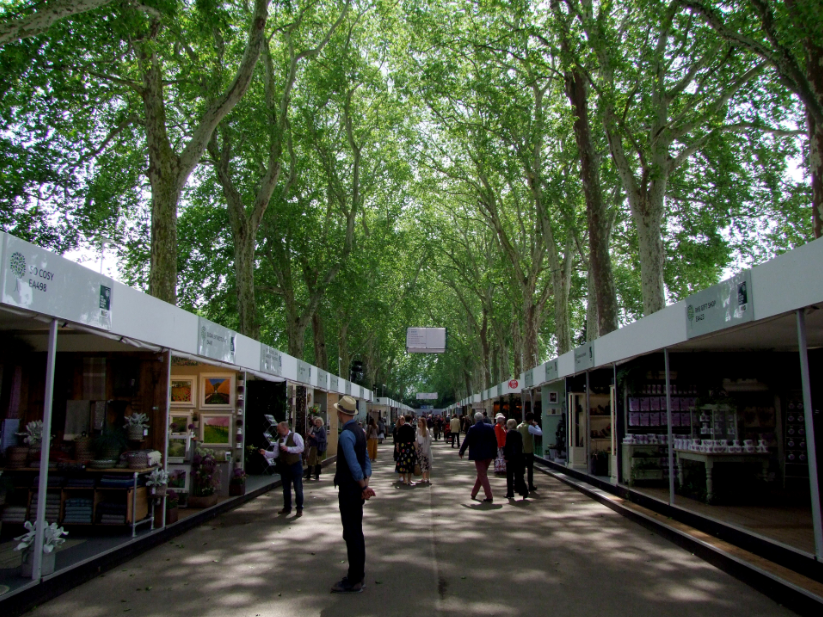
Main Avenue | Photo: Caleb Melchior
You enter into the Main Avenue. London Planes (Platanus x acerifolia) planted both sides of a wide walk create a vast canopy, flickering rows of booths. The uniform shape and color of the booths offsets the diversity of products and display styles on offer. In one booth, you could purchase some of Rachel Dein’s delicate casts – snowdrops, crocus, species tulips in bas relief. Others, garden tools or furnishings. You can sign up for Gardens Illustrated or The English Gardener magazine. But I was here for gardens, not to shop.
The show features three types of gardens: show gardens, urban gardens, and artisan gardens. Show gardens are the largest (1300-2100 sq ft / 120-200 sq meters), usually designed by high-profile UK garden designers and landscape architects, sponsored by large companies and organizations. They’re located around the Grand Marquis – the central venue where specialty nurseries and horticulture companies set up floral displays. Urban gardens, at 800-1100 sq ft/72-100 sq meters, usually explore contemporary forms and materials. They’re located against the backdrop of the Royal Hospital’s renaissance courtyard. Artisan gardens (220-430 sq ft/20-40 sq meters) are located back in the Ranelagh Gardens, to the east of the primary show grounds. They’re surrounded by woodland and typically explore looser, more rustic design styles.
Gardens in all three categories are incredible accomplishments. Anyone who’s been involved with making a landscape – particularly on a deadline – would be impressed at the craft and skill evident in these gardens. As a designer who works primarily in the United States, I’m highly impressed with the quality and range of plants available for these show gardens. The materiality is stunning.
But, looking at these gardens, I realized that there’s an integral element of the landscape experience that I missed. You can’t walk through most of the gardens. They’re set up like dioramas, beautiful jewel boxes that you can observe from the outside. As a press day attendee, I was fortunate to be able to have clear views of most of the gardens and walk around them without having to shove through a crowd. But I still felt like someone looking into a shop window. The gardens felt more like objects than spatial experiences.

Andy Sturgeon | Photo: Caleb Melchior
Different designers addressed this spatial challenge in different ways. Andy Sturgeon’s Woodland Garden for M&G, the 2019 Best in Show winner, used a highly graphic approach. Strong lines (like swift charcoal strokes in a drawing) of burnt wood ledge sculptures by Johnny Woodford set up an underlying layered structure to the garden’s space. Quirky corky trees rose between the ledges, creating green veils. Then, between the ledges burst forth an intricate groundcover layer of highly varied woodland plants.

Intermingling Tom Stuart Smith | Photo: Caleb Melchior
Diffusion – incorporating small-flowered and small-leaved plants with wiry stems – seemed a common technique for bringing lightness and movement to counteract the flatness of these gardens. Tom Stuart-Smith’s Show Garden for RHS Bridgewater (one of the few that you could actually walk through) featured highly intricate intermingled planting in jewel tones: purple cow parsley, orange euphorbia, tangerine geum, blue siberian iris.

Chanteuse | Photo: Caleb Melchior
In the Savills and David Harber Show Garden, designer Andrew Duff used white-flowered cow parsley and golden buttercups at the front of the garden to create a diffuse edge – enhancing the more solid shrub blocks and water bodies behind.

Montessorri Garden | Photo: Caleb Melchior
Diffusion was used in smaller gardens as well. Jody Lidgard’s Montessori Centenary Children’s Garden, one of the urban gardens, intermingled brightly colored flowers to create a display that a pointillist painter would love.
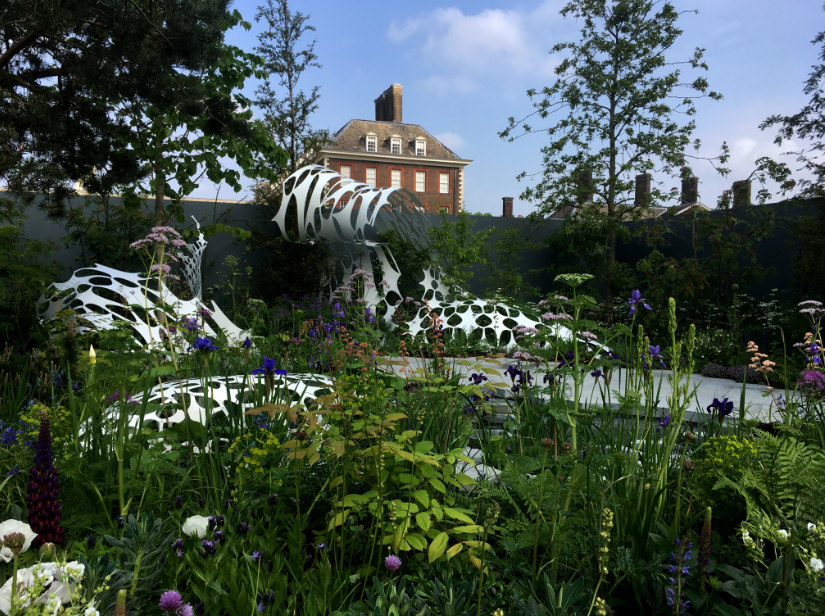
Laser Cut Aluminum Garden | Photo: Caleb Melchior
In addition to diffuse planting, designers used intricate and complex surfaces within the gardens to achieve depth. The Manchester Garden by Exterior Architecture incorporated a hand cut carbon fibre sculpture, Morpheus by Lazerian Studio. Morpheus’ organic form contrasted beautifully with the historical architecture of the Royal Hospital (visible in the background).
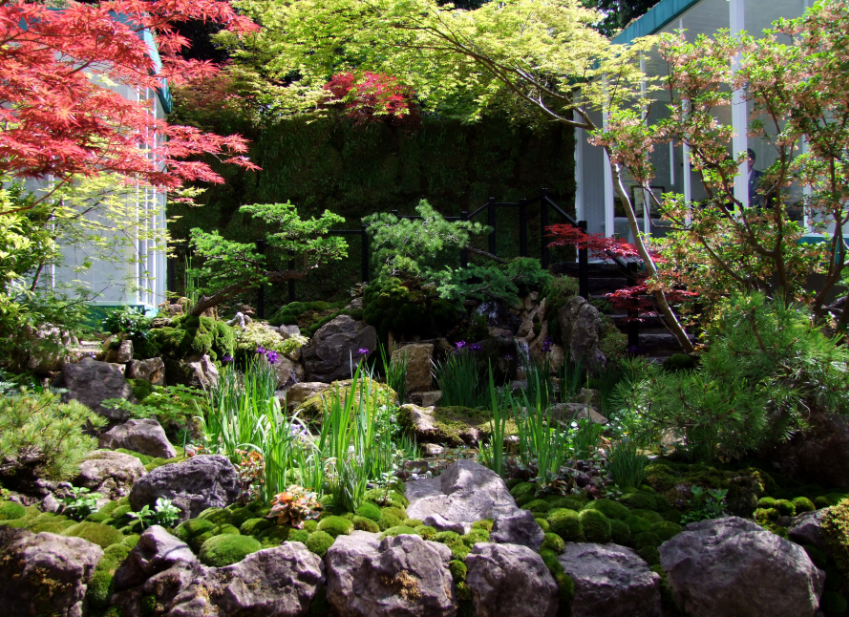
Moss Garden | Photo: Caleb Melchior
Kazuyuki Ishihare’s Green Switch Artisan Garden featured two glass cubes overlooking a moss-and-rock pool. The intricate surface of the moss, each soft hummock individually placed, created a sense of intense fascination. I couldn’t stop looking at it.
Reflecting on the show, the thing that I keep coming back to is the difference between my expectations and the actual experience of being there. Seeing photography of previous shows, my brain had interpolated an immersive spatial experience – an experience that the show didn’t deliver. This gap between expectations and experience reminded me of past visits to other high-profile landscape architecture projects that didn’t live up to the images.
Representation is always a challenge for landscape architecture and landscape architects. Visiting Chelsea – such a glorious temporary spectacle – made me wonder if sometimes the most meaningful landscapes are those we build only in our minds.
—
Lead Image: Driftwood Garden | Photo: Caleb Melchior



